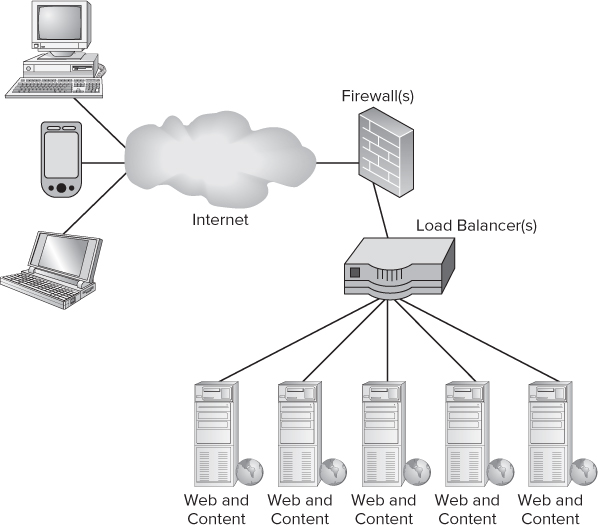Content Configuration
Before diving into the technologies that support a web farm, it's important to understand some high-level concepts for configuring the content for a web farm and to know which method you will use.
There are essentially three web farm file content configurations:
- Local content
- Shared network content
- Shared SAN content
The solution that you choose will often be based on the project requirements, budget, your previous experience, and/or available hardware. Each solution has its own set of advantages and limitations.
Local Content
Figure 16.8 shows a web farm configuration using local content. Each of the web servers keeps the content locally, and therefore it's up to the system administrator to set up either an automatic method of replication or a way to push content to all nodes after it has gone through the quality assurance team and is ready for deployment. In the case of the website writing files or changes to disk, it's important that the content be immediately replicated to the other servers so that they remain in sync.
There are several advantages and disadvantages of a web farm file content configuration using local content. Following are some advantages:
- There is complete isolation between servers. If something goes wrong, usually only one of the servers is affected, and if the load balancer properly takes it out of rotation, end users ...
Get Professional Microsoft IIS 8 now with the O’Reilly learning platform.
O’Reilly members experience books, live events, courses curated by job role, and more from O’Reilly and nearly 200 top publishers.


